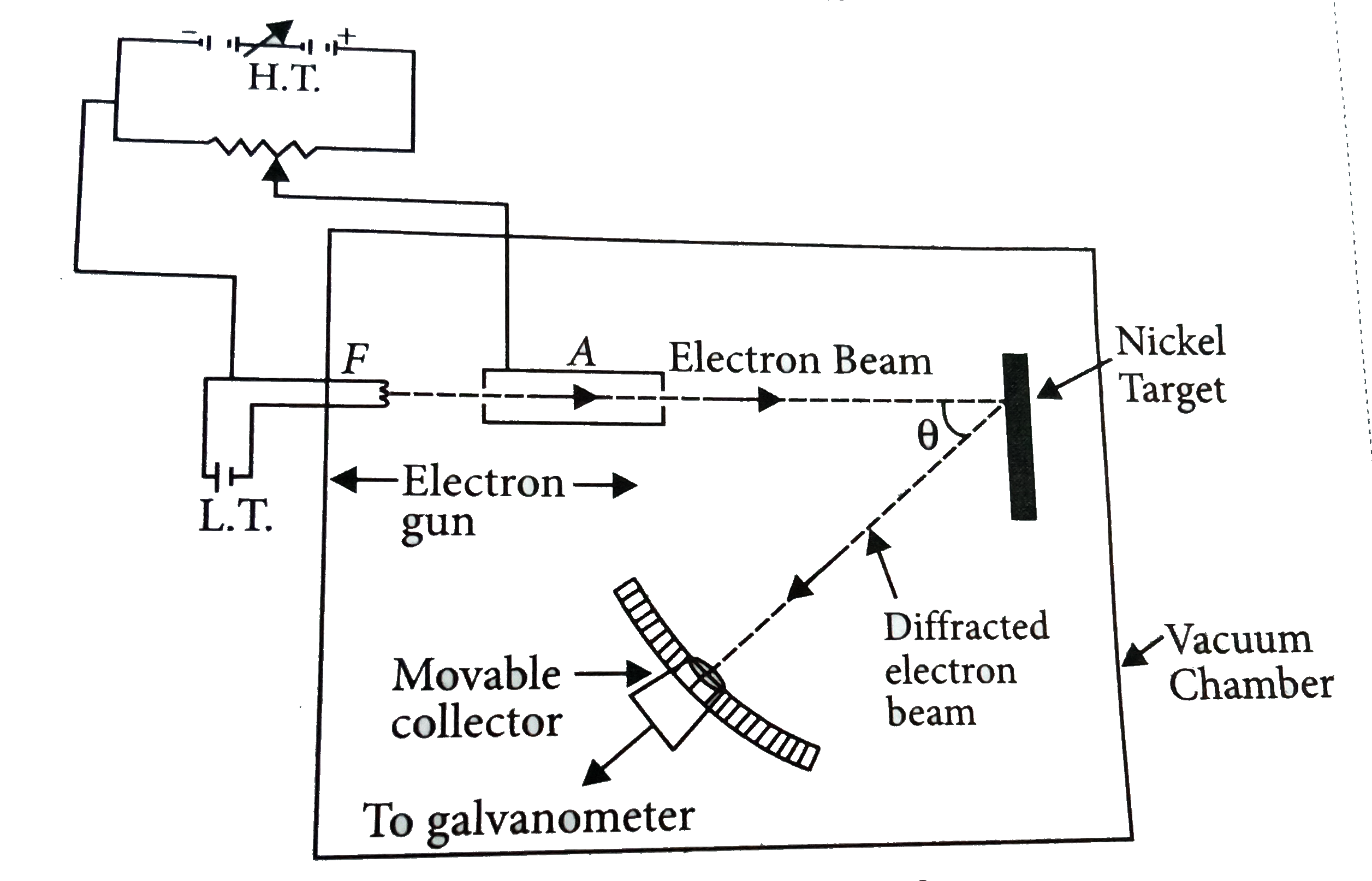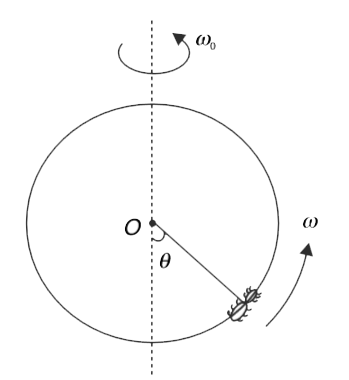Consider the fundamental physics for class XII. Suppose the voltage applied to A is increased. The diffracted beam will have the maximum at a value of θ that
will be larger then that earlier value
will be the same as the earlier value
will be less than the earlier value
will depend on the target
The correct Answer is:c
In Davisson and Germer Experiment, if V is the voltage applied to anode, then de-Broglie wavelength associated with electron is
λ=12.27√VÅ.......(i)
If there is a maxima of the diffracted electrons at an angle θ, then 2dsinθ=λ.........(ii)
From (ii), we note that as λ decreases, the value of sinθ decreases, i.e., θ decreases.
Topper's Solved these Questions
- DUAL NATURE OF RADIATION AND MATTERBook:PRADEEPChapter:DUAL NATURE OF RADIATION AND MATTERExercise:Value based question
Explore 1 Video
- CURRENT ELECTRICITYBook:PRADEEPChapter:CURRENT ELECTRICITYExercise:Problems for Practice (B)
Explore 2 Videos
- ELECTROMAGNETIC INDUCTION & ALTERNATING CURRENTBook:PRADEEPChapter:ELECTROMAGNETIC INDUCTION & ALTERNATING CURRENTExercise:Multiple Choice Questions
Explore 1 Video
Similar Questions
A bar of cross section A is subjected to equal and opposite tensile force at its ends. Consider a plane section of the bar whose normal makes an angle θ with the axis of the bar.

a. What is the tensile stress on the plane?
b. What is the shearing stress on the this plane?
c. For what value of θ is the tensile stress maximum?
d. For what value of θ is the shearing stress maximum?
View SolutionAll along we have been considering the apparent depth of an object viewed normally. Suppose that the object is being viewed at an angle θ to the surface. If the actual depth is d and angle of ray inside water is ϕ, what is the apparent depth ?
View Solution
Knowledge Check
Consider figure. Suppose the voltage applied to A is increased. The diffracted beam will have the maximum at a value of θ that
 Awill be larger then the earlier valueBwill be the same as the earlier valueCwill be less than the earlier valueDwill depend on the target
Awill be larger then the earlier valueBwill be the same as the earlier valueCwill be less than the earlier valueDwill depend on the targetIn Davisson-Germer electron diffraction arrangement if suppose the voltage applied to accelerated electrons is increased, the value of the angles at which diffracted beam have the maximum intensity
Awill be larger than the earlier value.Bwill be the same as the earlier value.Cwill be less than the earlier value.Dwill depend on the target.When the frequency of the AC voltage applied to a series LCR circuit is gradually increased from a low value, the impedance of the circuit
Amonotonically increasesBfirst increases and then decreasesCfirst decreases and then increasesDmonotonically decreases
A ring is made to rotate about its diameter at a constant angular speed of ω0 . A small insect of mass m walks along the ring with a uniform angular speed ω relative to the ring (see figure). Radius of the ring is R.
(a) Find the external torque needed to keep the ring rotating at constant speed as the insect walks. Express your answer as a function of θ. For what value of q is this torque maximum? [given your answer for 0≤θ≤90∘ ]
(b) Find the component of force perpendicular to the plane of the ring, that is applied by the ring on the insect. For what value of θ is this force maximum? Argue quantitatively to show that indeed the force should be maximum for this value of θ. [Give your answer for 0∘≤θ≤90∘ ]

View SolutionWhen the accelerating voltage applied on the electrons, in an X-rays tube, is increased beyond a critical value:
View SolutionConsider the following statements
I. tanθ increases faster than sinθ as θ increases.
II. The value of sinθ+cosθ is always greater than 1.
Which of the statements given above is/are correct ?
View SolutionConsider the function f(θ)=4(sin2θ+cos4θ)
What is the maximum value of the function f(θ)?
View SolutionA beam of monochromatic light of wavelength λ falls normally on a diffraction grating of line spacing d. If θ is the angle between the second-order diffracted beam and the direction of the incident light, what is the value of sinθ ?
View Solution